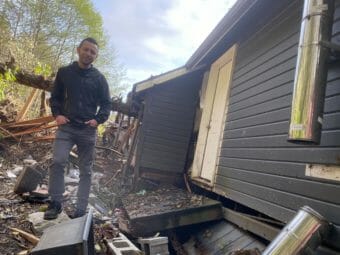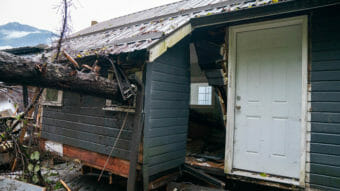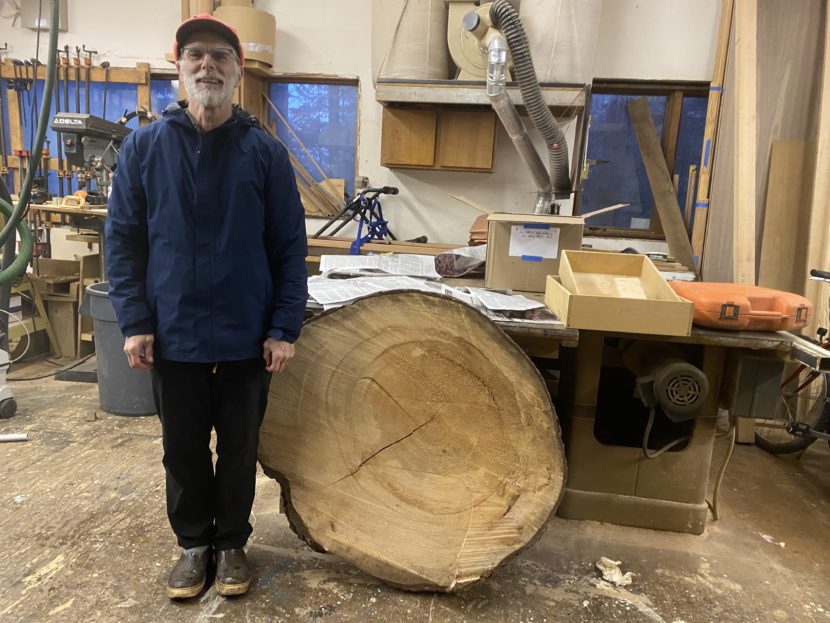
After it fell, the old tree above Gastineau Avenue slid about 650 feet down the shoulder of Mt. Roberts before crashing through a few houses and taking out a power line.
The tree knocked one home off its foundation, flipped a pickup and triggered an evacuation alert for the neighborhood. It took the city fifteen truckloads to haul away the debris.
The slide was over in a few seconds, but when Juneau naturalist Steve Merli looked at a slice of the tree — called a cookie — he saw a much longer story.
“That’s a calendar,” he said.
Merli and naturalist Richard Carstensen founded Discovery Southeast in Juneau to teach youth about the outdoors. They’re used to using ecological evidence to answer human questions.
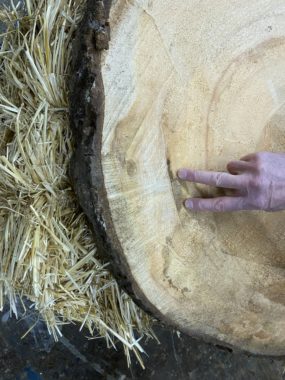
Carstensen said the rings tell us the tree was likely older than the United States. It sprouted and took root on the steep mountainside during the Little Ice Age, sometime in the 1700s. That’s back when Áakʼw Tʼáak Sít, the Mendenhall Glacier, extended about five miles further than it does today, and the Gastineau Channel was choked with icebergs. Typical August weather during the time included sleet.
But the rings show a lot more than the tree’s age.
“The first thing we noticed was that the rings are way bigger here,” Carstensen said, pointing out a contrast between the two sides of the tree. One side has wider rings. “A conifer tree that’s based on a steep hill is almost always leaning out, like in this case toward the channel. When they lean over time, they get thicker rings on the lower side.”
Carstensen said old trees like this one can actually thrive on Juneau’s steep slopes.
Goats, old trees and steep places
A pandemic-born obsession with mountain goats led Carstensen to new insights about incline and tree longevity. He spent a lot of time watching goats on avalanche paths, and he noticed some really old trees where he didn’t expect them.
“You cannot study goats and not become intrigued with their relationship to avalanches,” Carstensen said. “Because that’s the main way they die. But it’s also creating the best goat winter habitat in the world.”
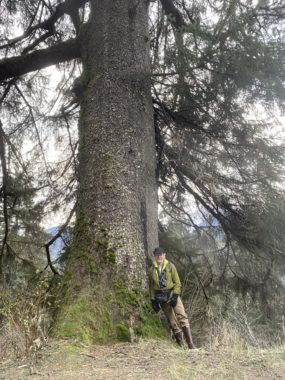
Out on the Behrends hillside, he pointed out a grazing goat. It was munching on nettles at about 1,000 feet up and easy to see because there was only low foliage around him. This is a known avalanche path, and the little trees are a giveaway — mostly alders and low brush. But Carstensen pointed out a huge spruce.
“I call this the brave outlier because it sits out right in the firing line. And I’m guessing it’s at least 300 years old,” he said.
The spruce is extremely thick — Carstensen calls it “refuge diameter.” In other words, there’s safety in its girth. There aren’t many other trees around it because anything too much smaller gets toppled or buried.
“Every year, there’s an avalanche. And more often than not, it piles up to the base of this tree to 10 feet or more,” he said. “And you’ll walk over it and you go, ‘how did this thing survive?’”
He said there are even more trees like this up high. He’s seen them while installing cameras to check out the goats.
It turns out big trees do well on steep hillsides, and not just because they aren’t likely to get logged. “Colluvium” is the term for rocky soil on slopes like these around Juneau. It’s coarser than soil in a valley, for instance, and will have rocks and even boulders in it. Those give roots something to hold onto. Carstensen said the deep water table on a very steep hillside also helps because trees will send their roots down further.
He pointed out a hemlock that would have been inconspicuous if there wasn’t a huge bald eagle nest in its crown. It’s about five feet thick at the base. Carstensen said it’s easily 1,000 years old.
“If we were to core that hemlock, I can guarantee you that the outer foot alone would have 300 rings,” he said.
The life of a tree
The cookie from the Gastineau Avenue tree tells us the tree lived on a steep slope, but it also tells us a little about its life there. The rings are so dense at the core that they nearly blend together. Carstensen said that’s rare for the species.
“Normally, a spruce gets started in a canopy gap, and the center rings are pretty big. But this tree was suppressed by an overhead canopy, so it was growing very slowly, like a hemlock grows in a forested, shady situation,” he said.
Carstensen pointed out a dark spot in the trunk where a rock likely bashed the tree. According to the rings, it took almost three decades to fully heal. It wasn’t the only evidence of abuse, either — the rings knit around other dark spots, all on the uphill side of the tree.
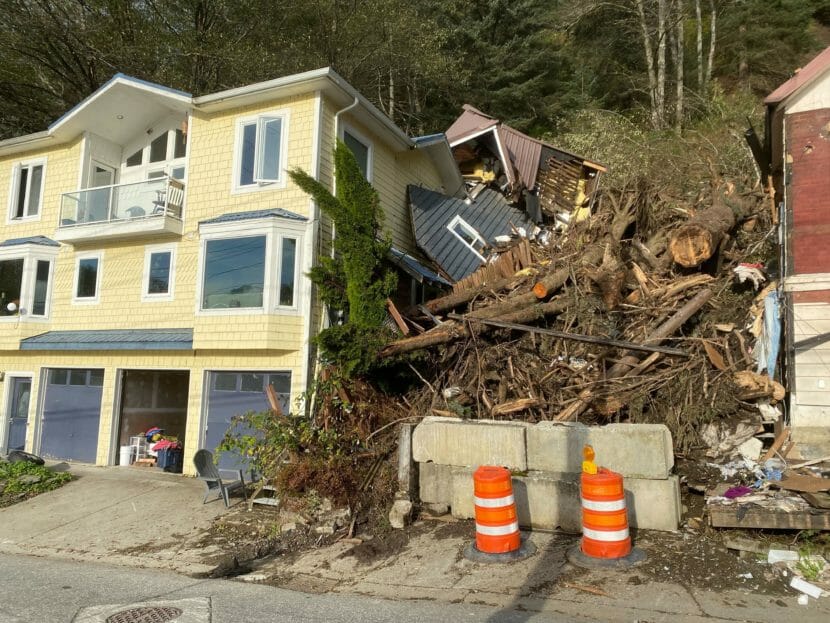
There’s no definitive answer to what took the tree down. It could have been high winds, or saturated soil that gave way. The base of the trunk was rotten, according to Juneau city officials.
Most of the tree went to the dump — what’s left still rests between the damaged houses on Gastineau Avenue.
Correction: An earlier version of this story misstated the name of Discovery Southeast.

